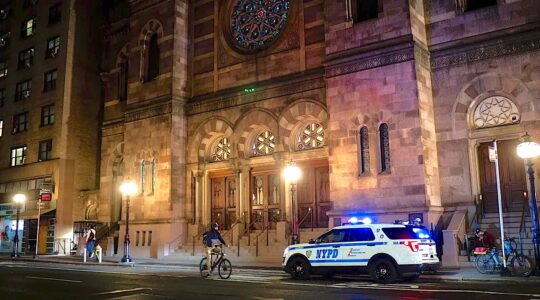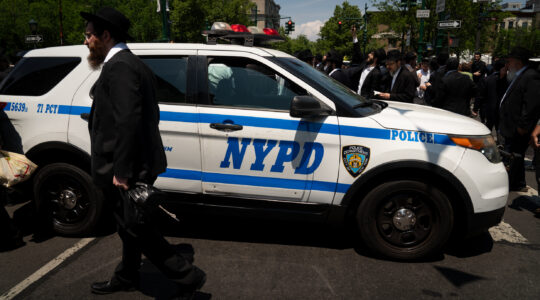There was a sea in landlocked Cambria Heights on Sunday. A sea of kvitlach.
In the open space in front of the gravestone of Rabbi Menachem Mendel Schneerson, rebbe of the Chabad-Lubavitch chasidic movement, his followers left small hand-written notes asking for health, a child, a shidduch or other needs from the heart. The notes were in Hebrew, English, Russian and a smattering of other languages.
Thursday was the Rebbe’s 15th yahrtzeit, and members of the ranks of Chabad and supporters from non-Orthodox circles came to pray at his resting place, next to that of his father-in-law, Rabbi Joseph Schneersohn.
Chabad officials estimated the number of mourners — men and women going through separate entrances — at more than 50,000. They come from everywhere Chabad emissaries are posted, which is, basically, everywhere.
The Old Montefiore Cemetery in Queens is a year-round center of Lubavitch pilgrimage, but the numbers swell each year on Rabbi Schneerson’s yahrzeit, the third day of Tammuz.
This year Chabad at the Ohel, the movement’s center at the edge of the cemetery, set up an 18,000-square-foot air-conditioned pavilion that offered accommodations and hospitality and food to the international worshippers.
For most, the wait in line was one-to-three hours. At the grave, they have two minutes for prayers and contemplation.
“In a way,” says Rabbi Abba Refson, director of Chabad activities at the Ohel, “the long lines allow people to prepare for their visit to the Ohel, and to get into the right mindset before their ‘encounter’ once inside the enclosure.”
After the yahrtzeit, the crowds dispersed.
Until the sea returns next year.
The New York Jewish Week brings you the stories behind the headlines, keeping you connected to Jewish life in New York. Help sustain the reporting you trust by donating today.




